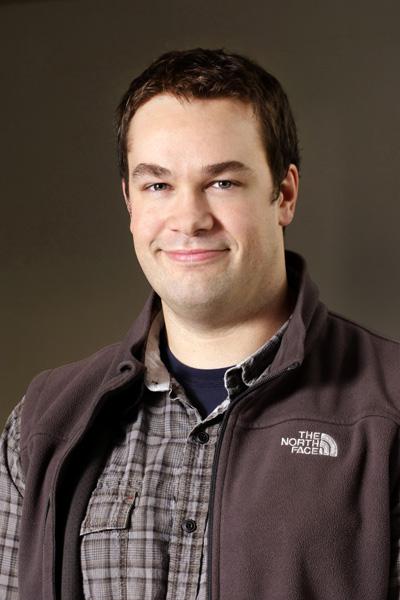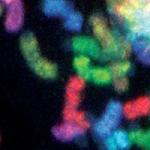
Robert Williams, Ph.D.
Senior Investigator
Genome Integrity & Structural Biology Laboratory / Genome Stability Structural Biology Group
NIEHS
Research Topics
Exposure to environmental toxicants and stressors, pharmaceutical drugs, chronic inflammation, cellular respiration, and routine DNA metabolism all contribute to the production of cytotoxic DNA strand breaks. We focus on understanding the mechanisms through which chemically heterogeneous DNA breaks are recognized and repaired in cells, and elucidating how DNA repair complexes integrate with the cellular signaling apparatus to signal DNA damage. Our group utilizes a multidisciplinary approach by combining high-resolution (X-ray crystallography) and low-resolution (Small angle X-ray scattering) macromolecular structural methods with biochemical and genetic studies to understand: 1) How DNA damage is recognized, repaired and signaled, using atomic resolution, 2) How proteins that guard stability of the genome are impacted by mutation in cancer predisposition syndromes and neurological diseases and, 3) How the cellular DNA repair machinery can be targeted for the improved treatment of human diseases including cancer. Currently, we are focused on examining structure and function of the DNA end processing factors, Tyrosyl DNA phosphodiesterase 2 (Tdp2) (project 1) and Aprataxin (Aptx) (project2).
Project1- Tdp2: Topoisomerase II (topo II) DNA incision/ligation reactions can be poisoned (e.g following treatment with chemotherapeutics) to generate DNA double strand breaks (DSBs) with topo II covalently bound to DNA. Left un-processed, such protein-adducted DNA ends can impair DSB repair, thereby contributing to accumulation of clastogenic DSBs, genomic instability, mutagenesis, and cell death. Tyrosyl-DNA phosphodiesterase 2 (Tdp2) protects genomic integrity by reversing 5'-phosphotyrosyl (5'-Y) linked topo II protein-DNA adducts. Tdp2 functions in cellular topo II drug resistance, and also mediates mutant p53 gain of function phenotypes. However, the molecular basis underlying Tdp2 topo II-DNA adduct repair activities remains unclear in the absence of protein structural information for any Tdp2 homolog. To understand Tdp2 functions we determined X-ray crystal structures of mammalian Tdp2 in three DNA bound states, and studied Tdp2 activities using mutational and functional studies that define determinants of Tdp2 DNA-protein covalent adduct recognition and reversal. Together, our results provide insights to the mechanism of Tdp2-linked cancer chemotherapeutic resistance, and establish a framework for the development of Tdp2 inhibitors that could be employed as adjuvants for commonly employed chemotherapeutic topoisomerase II poisons (e.g Etoposide).
Project 2-Aptx: In the ultimate step of DNA replication and repair processes, DNA ligases seal DNA nicks through with a mechanism that can abort when the ligase encounters DNA termini harboring the products of oxidative or DNA-alkylation damage. Such "abortive ligation" generates a secondary form of damage, 5'-adenylated DNA-termini, which is corrected by Aptx to protect genomic integrity. Aptx is a conserved eukaryotic DNA repair enzyme that is important for protection of cells from oxidative DNA damage, and APTX mutations cause the hereditary neurodegenerative disorder Ataxia with Oculomotor Apraxia 1 (AOA1). To understand Aptx function, we recently elucidated the structure of an S. pombe Aptx-DNA-AMP-Zn complex revealing active site and DNA interaction clefts formed by fusing a HIT (histidine triad) nucleotide hydrolase with a DNA minor groove binding C2HE Zn-finger (Znf). Structural and mutational studies define the catalytic mechanism for 5'-AMP adduct recognition and removal, and suggest mutations impacting protein folding, the active site pocket, and the pivot underlie Aptx dysfunction in the neurodegenerative disorder Ataxia Oculomotor Apraxia 1 (AOA1).
Biography
Dr. Williams heads the Genome Stability Structural Biology Group within the Laboratory of Structural Biology at NIEHS. As a graduate student studying structure and function of the BRCA1 tumor suppressor, Dr. Williams became intensely interested in cellular responses to DNA damage. He earned his Ph.D. in Biochemistry (2003) from the University of Alberta, Canada. He then completed his postdoctoral training at the Scripps Research Institute in La Jolla, California, before joining NIEHS as a Tenure Track Principal investigator in November 2009.
Selected Publications
- Tumbale P, Schellenberg MJ, Mueller GA, Fairweather E, Watson M, Little JN, Krahn J, Waddell I, London RE, Williams RS. Mechanism of APTX nicked DNA sensing and pleiotropic inactivation in neurodegenerative disease. EMBO J. 2018;37(14).
- Schellenberg MJ, Lieberman JA, Herrero-Ruiz A, Butler LR, Williams JG, Muñoz-Cabello AM, Mueller GA, London RE, Cortés-Ledesma F, Williams RS. ZATT (ZNF451)-mediated resolution of topoisomerase 2 DNA-protein cross-links. Science. 2017;357(6358):1412-1416.
- Andres SN, Appel CD, Westmoreland JW, Williams JS, Nguyen Y, Robertson PD, Resnick MA, Williams RS. Tetrameric Ctp1 coordinates DNA binding and DNA bridging in DNA double-strand-break repair. Nat Struct Mol Biol. 2015;22(2):158-66.
- Tumbale P, Williams JS, Schellenberg MJ, Kunkel TA, Williams RS. Aprataxin resolves adenylated RNA-DNA junctions to maintain genome integrity. Nature. 2014;506(7486):111-5.
- Schellenberg MJ, Appel CD, Adhikari S, Robertson PD, Ramsden DA, Williams RS. Mechanism of repair of 5'-topoisomerase II-DNA adducts by mammalian tyrosyl-DNA phosphodiesterase 2. Nat Struct Mol Biol. 2012;19(12):1363-71.
Related Scientific Focus Areas


Molecular Biology and Biochemistry
View additional Principal Investigators in Molecular Biology and Biochemistry



This page was last updated on Friday, April 12, 2013